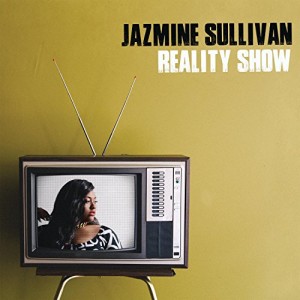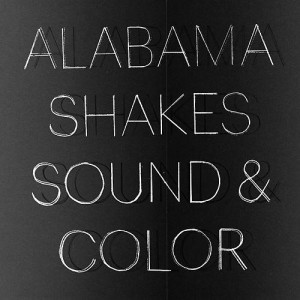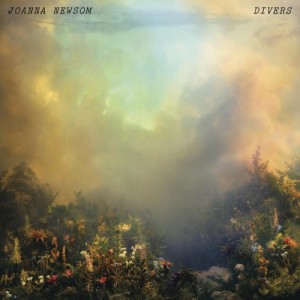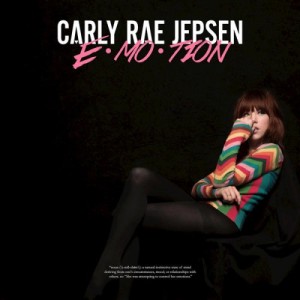This was the year when the biggest artists on the planet spent more time than anyone’s patience would allow teasing albums that never came. Kanye, Rihanna, Drake, Frank Ocean, there were even Beyoncé rumors for awhile—none showed up to the album party, and in retrospect it’s not hard to see why: The top albums of 2015 were almost all in some way breakthroughs, work from artists who seemed to have something to prove. No less than six albums on our list parried the threat of the sophomore slump, including our number one pick and the artist pictured above, who willed herself to critical acceptance with E•MO•TION by doing what she’s always done—write devilishly catchy love/lovelorn songs—but also through compromise, meeting a fickle pop audience on the terms of their contemporaneous ’80s pop fetish.
So many others did similar, but marking the third or even fourth time as the charm: Prince Royce, triangulating his Bachata background with the crossover strategies of Latin pop stalwarts J-Lo and Pitbull on Double Vision; Eric Church, shirking metal-head excesses for streamlined accessibility on Mr. Misunderstood; and Future, re-breaking through after last year’s Honest lost the public’s attention by trying really really hard and succeeding to capture what his audience initially loved about him, descending into a haze of questionable but compelling life choices on DS2 and on songs for just about everyone else. Its efforts like his, and like those of the striving artists responsible for the 10 albums below, that should reach pop’s dormant royalty and make whatever list we put together this time next year that much more interesting. Sam C. Mac

9. Young Thug doesn’t quite play by the same rules as other rappers, continuing to release multiple mixtapes each year (four in 2015 alone), and offering a lazily unforced vocal style that’s odd and distinctive even by today’s evolving hip-hop standards. Although much of the publicity surrounding Barter 6 concerned its name change and its artist’s aggravation of Lil Wayne, the personality and wit of Young Thug’s boasts can often be as incisive as that of Wayne himself. He is at his most playful when you least expect it, rattling off lines like “I might shoot you in your head and then it’s no more thinkin’” in the manner of maniacal comedy, and riffing on mainstream ideas of success when he confesses, “I wanna be like Mike, and I ain’t talkin’ Phelps, bruh.” Young Thug has his own ideas of achievement that don’t quite fit the common mold, and he certainly has a unique way of relaying them. Calum Reed
8. Rock and roll offers few sounds more thrilling than that of a good band becoming a great one—getting bigger and bolder, perhaps even more accessible, but at the same time more willfully weird and uncompromising too. Alabama Shakes makes this leap forward on their second LP, Sound & Color, not so much rejecting Southern rock and soul as expanding its definitions and reclaiming the music as something inherently funky, wild, and messy. The band ride grooves and belt big, brassy soul; they crank out jams like they were working the night shift in Keith Richards’s riff factory; and they get quiet for long stretches, as it suits them. They immerse themselves in sound and color—but critically, they don’t forget about the songs. Josh Hurst
7. An album that not only thrives on conflict but gets off on it, Wildheart positions Miguel at the forefront of contemporary sexual politics and its representation in today’s art. Miguel is quick to indulge in the creation of a fantastical image of a smooth-crooning lothario, but he also recognizes the inherent problems of and limitations in doing so. Over the course of Wildheart, he embraces conflicting personae, but sounds no less convincing or authoritative pillow talking of “sweet dreams and coffee in the morning” than he does on the ironic-or-is-it porn conceit of “The Valley.” What’s most progressive about this POV is that Miguel buys into the idea that sexuality is better viewed from a performative slant than as capital to be earned or hoarded. The album’s fundamental angst stems from his attempts to reconcile that view with a world that still considers sex as a commodity. Jonathan Keefe
6. A song cycle in every sense, indie-folk iconoclast Joanna Newsom’s fourth LP Divers is informed by major transitional life events—a marriage and a cross-country move (crucially, a return home to California)—and it finds Newsom pursuing the meaning of time, memory, and love. From dense alternate histories of New York (“Sapokanikan”) to spare moments of self-reflection (“The Things I Say,” which seems to get pulled away from the listener as it’s ending, echoing and repeating itself in reverse), the singer-songwriter’s compositional brilliance enriches the album’s ideas with internal rhymes and repeated phrases both musical and verbal. She projects herself into the past and future, wonders at the infinite and mourns what’s been lost, arriving finally at a revelation: “Love is not a symptom of time/Time is just a symptom of love.” The transcendence she finds at the end of the last song ends mid-word (“tran-”), encouraging the listener to follow her back to the beginning of the first (“sending”) with a new understanding of what she calls “what we are allowed,” and so the cycle continues. Alex Engquist
5. Consider a now-famous line from Carly Rae Jepsen’s smash debut single. No, not that one, this: “Before you came into my life, I missed you so bad.” Today, it could just as easily be applied to Jepsen’s presence on the contemporary music scene. After all, what was 21st century pop music before she arrived? Bringing back the vibrant, candied pop confection that willed teenage girls to sing into their hairbrushes in front of full-length mirrors, Jepsen has not only set the standard for seemingly disposable but secretly savvy mainstream relationship narratives, she’s done it with the type of ragtag, fickle innocence of a circa-1985 Madonna. Now consider a line from E•MO•TION‘s best single: “Over the weekend, we can turn the world to gold.” Jepsen, deconstructing the impetuous desire of young love with an uninhibitedly euphoric delivery, seems to think that anything is possible—and we tend to believe her. Calum Reed
4. Having already navigated through baroque pop, orchestral, and electronic music, Sufjan Stevens returns to his mellow folk roots on Carrie & Lowell, even as he judiciously incorporates elements of experimentation. He’s likewise stripped away much of the obliqueness that has defined the self-reflective lyricism of past efforts—instead, he rends his psyche wide open, intimately cradling the listener as he whispers of his struggles with feelings of familial emptiness, self-destructive tendencies, and suicidal idealization. Patient strings and the spectral voices of guest vocalists consistently add to the album’s haunting melancholy, but unlike on previous albums, Stevens’s considerable musical prowess proves intentionally complimentary here to his lyrical transparency. Where Stevens has consistently wrought complexity from poetic inexactitude, with Carrie & Lowell he instead delves into the murkier and deeply personal realm of emotional inexactitude, an expression of self that is both heartbreakingly felt and demonstrative of his considerable growth as a person and an artist. Luke Gorham
3. Susanne Sundfør impressed with the epic baroque pop style of 2013’s The Silicone Veil, but she’s taken her music to stratospheric levels on this year’s Ten Love Songs, her latest committed paean to romance. “It’s written in the stars, darlings” she tells us in the opening minute of what becomes a deeply-wrought compendium of heartache, articulating love as an otherworldly force of nature that renders us powerless to its many rewards and frequent punishments. Her continued use of celestial references reaches its peak on the album’s standout track, “Memorial,” in which Sundfør delivers an audacious ten-minute-long crushing lament for lost love, framed by the sentiment, “A cosmic war raging in the sky, but all I could hear was your last goodbye.” Amid her grandiose and astronomic claims, one can’t help but feel blessed to have Sundfør here on Earth. Calum Reed
2. The Blade opens with a fake-out of optimism (the Robyn by-way-of ’80s Dolly Parton “On to Something Good”), then promptly burrows into the firmament for the remainder of its wondrous song cycle, suggesting why that optimism is necessary to make it through the day but also why it’s ultimately misplaced. Ashley Monroe chooses to embrace vice because she knows that each leaves behind a scar that makes for one hell of a story and that renders nerve endings permanently numbed. The central metaphor of the title track astonishes for its clarity, and Monroe is no less clear-eyed on “I Buried Your Love Alive” or the devastating “Mayflowers.” Country music’s gender politics somehow managed to get even more gross than usual in 2015, making the most unabashedly feminist album to come out of Nashville since Crazy Ex-Girlfriend all the more vital. Jonathan Keefe
1. Where Good Kid, M.A.A.D. City had big hooks, energetic rhyming in lockstep with the beat, and clear narrative thrust, To Pimp a Butterfly is a morass of live grooves, stream-of-consciousness lyrics, and not so much an overarching narrative as lots of fractured ones ducking in and out of coherence. Tidy it isn’t, but like There’s a Riot Goin’ On or the distended jams of One Nation Under a Groove, the messiness is the point. The focused and fervent anger, politics, cosmic knowledge, and above all unshakable self-doubt is the point too. Kendrick Lamar is every bit as invested in his 11th-hour positivity anthem as he is the song that trumpets him as “the biggest hypocrite of 2015” and pivots on a third verse devoted to ruthless self-critique; as invested in the disco-ish one that sexualizes the prison industrial complex as he is the two songs devoted to fame being being the undoing of a black man. Like the reluctant messiah of last year’s best album, he has a lot to say but willfully avoids intentionality, perhaps out of the great wisdom of his own fallibility, or simply because there aren’t easy answers to the questions he’s asking. Sam C. Mac










